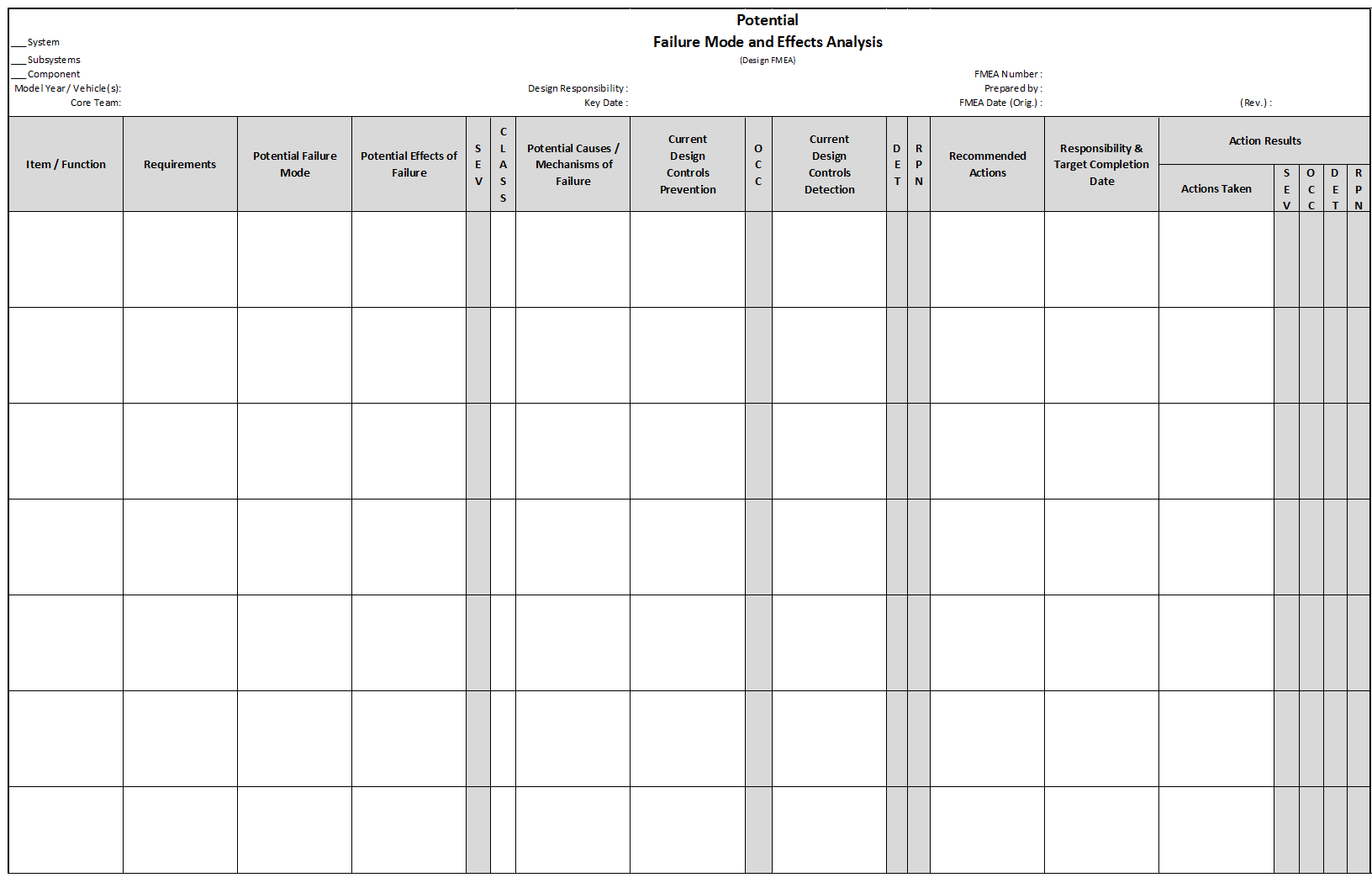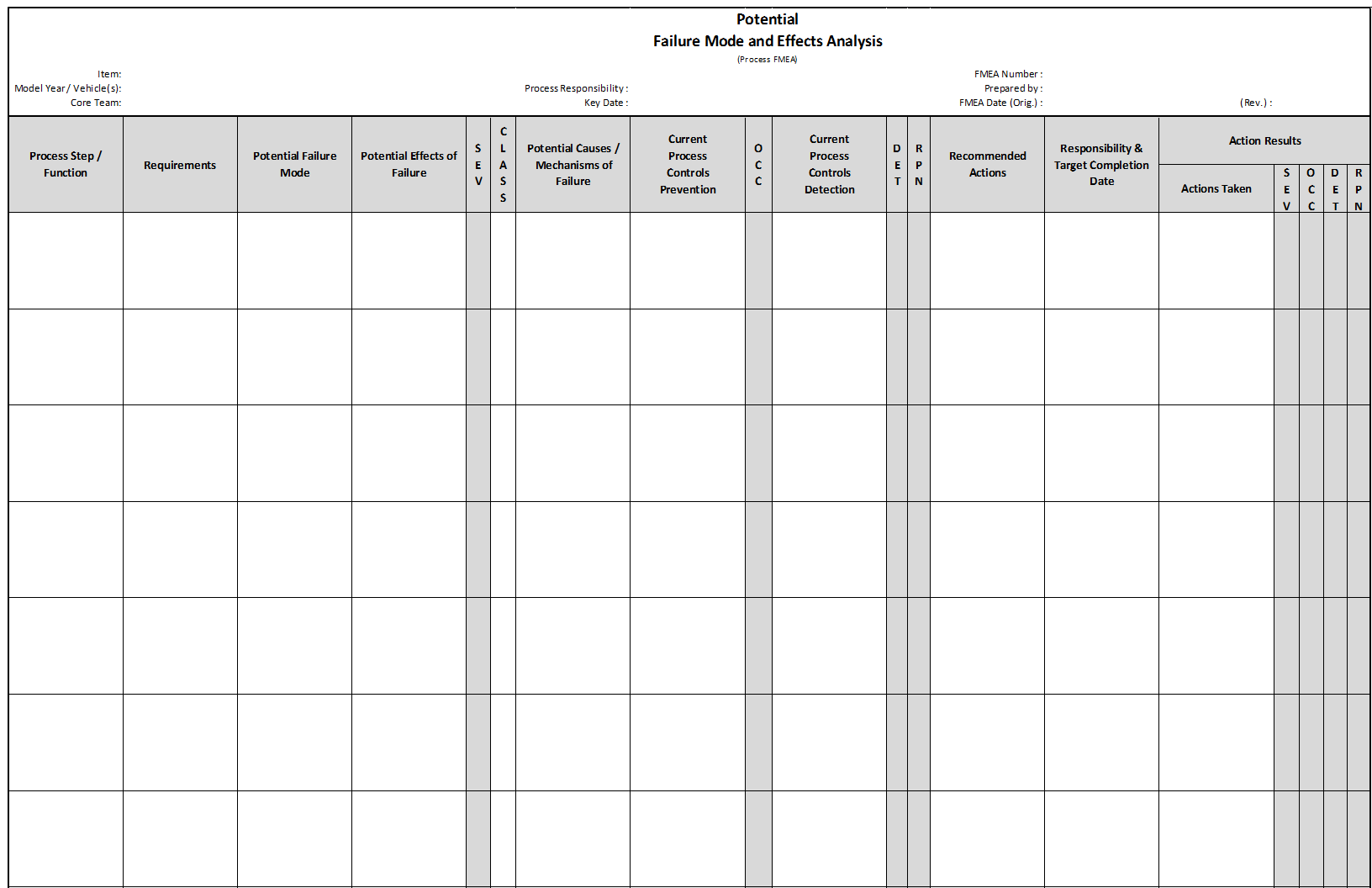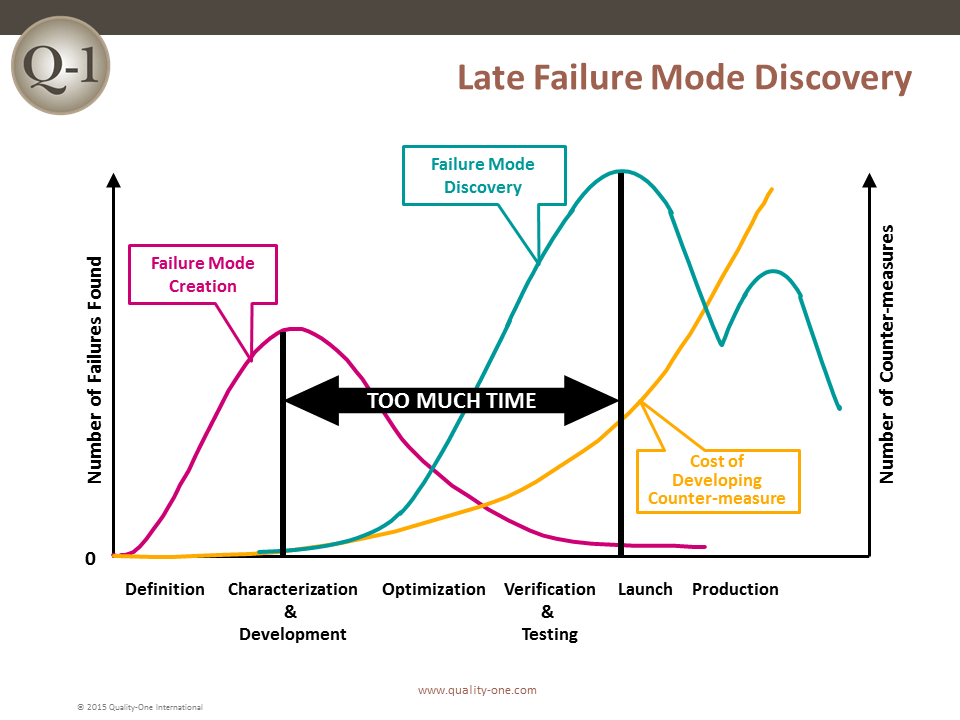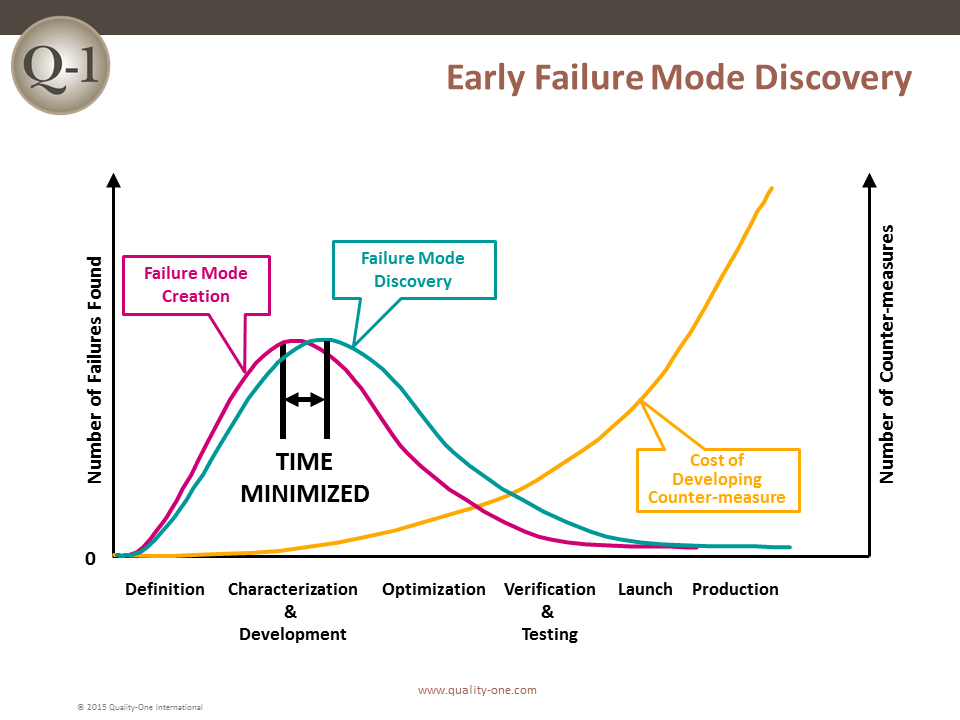 Design FMEA Worksheet" width="1632" height="1056" />
Design FMEA Worksheet" width="1632" height="1056" />
There are numerous high-profile examples of product recalls resulting from poorly designed products and/or processes. These failures are debated in the public forum with manufacturers, service providers and suppliers being depicted as incapable of providing a safe product. Failure Mode and Effects Analysis, or FMEA, is a methodology aimed at allowing organizations to anticipate failure during the design stage by identifying all of the possible failures in a design or manufacturing process.
Developed in the 1950s, FMEA was one of the earliest structured reliability improvement methods. Today it is still a highly effective method of lowering the possibility of failure.
Failure Mode and Effects Analysis (FMEA) is a structured approach to discovering potential failures that may exist within the design of a product or process.
Failure modes are the ways in which a process can fail. Effects are the ways that these failures can lead to waste, defects or harmful outcomes for the customer. Failure Mode and Effects Analysis is designed to identify, prioritize and limit these failure modes.
FMEA is not a substitute for good engineering. Rather, it enhances good engineering by applying the knowledge and experience of a Cross Functional Team (CFT) to review the design progress of a product or process by assessing its risk of failure.
There are two broad categories of FMEA, Design FMEA (DFMEA) and Process FMEA (PFMEA).
Design FMEA (DFMEA) explores the possibility of product malfunctions, reduced product life, and safety and regulatory concerns derived from:
Process FMEA (PFMEA) discovers failure that impacts product quality, reduced reliability of the process, customer dissatisfaction, and safety or environmental hazards derived from:
 Design FMEA Worksheet" width="1632" height="1056" />
Design FMEA Worksheet" width="1632" height="1056" />
 Design FMEA Worksheet" width="1632" height="1056" />
Design FMEA Worksheet" width="1632" height="1056" />


Historically, the sooner a failure is discovered, the less it will cost. If a failure is discovered late in product development or launch, the impact is exponentially more devastating.
FMEA is one of many tools used to discover failure at its earliest possible point in product or process design. Discovering a failure early in Product Development (PD) using FMEA provides the benefits of:
Ultimately, this methodology is effective at identifying and correcting process failures early on so that you can avoid the nasty consequences of poor performance.




There are several times at which it makes sense to perform a Failure Mode and Effects Analysis:
In addition, it is advisable to perform an FMEA occasionally throughout the lifetime of a process. Quality and reliability must be consistently examined and improved for optimal results.
FMEA is performed in seven steps, with key activities at each step. The steps are separated to assure that only the appropriate team members for each step are required to be present. The FMEA approach used by Quality-One has been developed to avoid typical pitfalls which make the analysis slow and ineffective. The Quality-One Three Path Model allows for prioritization of activity and efficient use of team time.
The Steps for conducting FMEA are as follows:
Pre-work involves the collection and creation of key documents. FMEA works smoothly through the development phases when an investigation of past failures and preparatory documents is performed from its onset. Preparatory documents may include:
A pre-work Checklist is recommended for an efficient FMEA event. Checklist items may include:
Path 1 consists of inserting the functions, failure modes, effects of failure and Severity rankings. The pre-work documents assist in this task by taking information previously captured to populate the first few columns (depending on the worksheet selected) of the FMEA.
Causes are selected from the design / process inputs or past failures and placed in the Cause column when applicable to a specific failure mode. The columns completed in Path 2 are:
Path 3 Development involves the addition of Detection Controls that verify that the design meets requirements (for Design FMEA) or cause and/or failure mode, if undetected, may reach a customer (for Process FMEA).
The Actions that were previously determined in Paths 1, 2 or 3 are assigned a Risk Priority Number (RPN) for action follow-up.
RPN is calculated by multiplying the Severity, Occurrence and Detection Rankings for each potential failure / effect, cause and control combination. Actions should not be determined based on an RPN threshold value. This is done commonly and is a practice that leads to poor team behavior. The columns completed are:
FMEA Actions are closed when counter measures have been taken and are successful at reducing risk. The purpose of an FMEA is to discover and mitigate risk. FMEAs which do not find risk are considered to be weak and non-value added. Effort of the team did not produce improvement and therefore time was wasted in the analysis.
After successful confirmation of Risk Mitigation Actions, the Core Team or Team Leader will re-rank the appropriate ranking value (Severity, Occurrence or Detection). The new rankings will be multiplied to attain the new RPN. The original RPN is compared to the revised RPN and the relative improvement to the design or process has been confirmed. Columns completed in Step 7:
Deciding when to take an action on the FMEA has historically been determined by RPN thresholds. Quality-One does not recommend the use of RPN thresholds for setting action targets. Such targets are believed to negatively change team behavior because teams select the lowest numbers to get below the threshold and not actual risk, requiring mitigation.
The analysis of an FMEA should include multiple level considerations, including:
When completed, Actions move the risk from its current position in the Quality-One FMEA Criticality Matrix to a lower risk position.
When risk is determined to be unacceptable, Quality-One recommends a priority of action to be applied as follows:
The Failure Modes in a FMEA are equivalent to the Problem Statement or Problem Description in Problem Solving. Causes in a FMEA are equivalent to potential root causes in Problem Solving. Effects of failure in a FMEA are Problem Symptoms in Problem Solving. More examples of this relationship are:
This FMEA Example has one item with a progression through multiple recommended Actions. With each instance, the revised RPN has improved. The final RPN of 10 indicates the issue has been mitigated successfully. The new state should be captured as Standard Work.